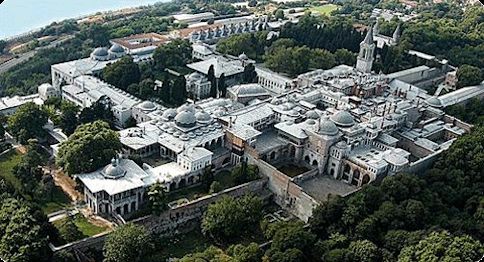
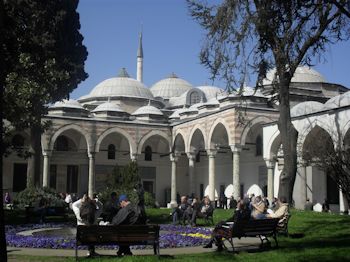
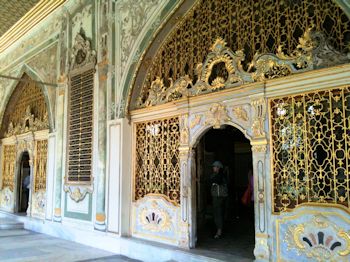
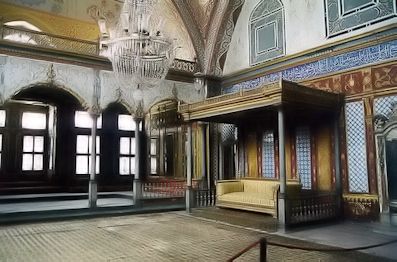
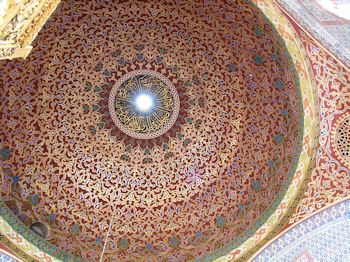

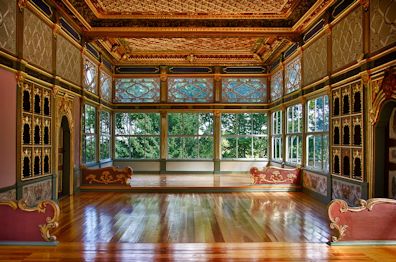
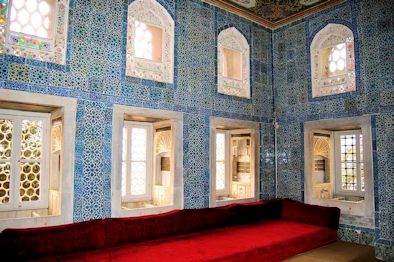
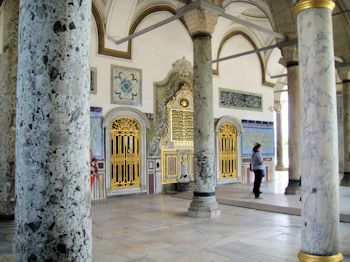
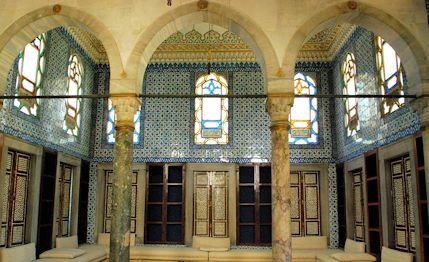
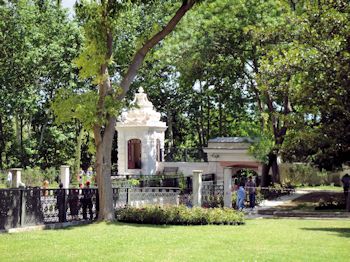
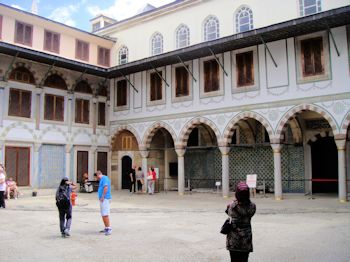
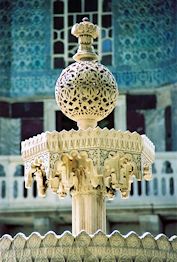
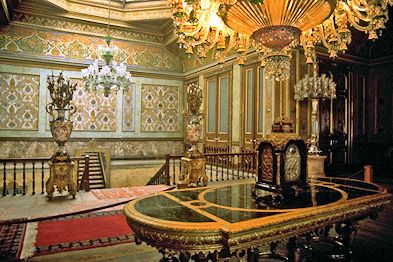
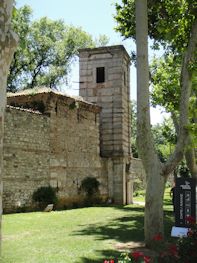
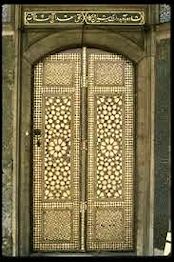

The Daily Diary of a Wandering Restaurateur
Topkapi Palace
We are counting days at this point and trying to plan our time to tick those last few must-see places off our list
before the trip ends. The list of sights is endless, though, so of necessity we are focusing on the big ones. Uluc is back
with us for another day, so our available options just went up considerably. Since the Hagia sofia is closed today, Uluc
suggested we spend our time in the Topkapi Palace. Good call.
With one of the major attractions closed, though, that tends to funnel all the tour groups into what is open so we got an
early start and tried to beat the worst of the crowds with the idea that we might actually be able to see something.
That worked to a point, but looking at the photos at the end of the day, I realized we had lots of pictures of people's
heads. So in the interests of telling the tale, I reverted to the Internet for more professional photos of what we saw but
taken when the place was not wall-to-wall with the unwashed masses.
Topkapi Palace is where the Sultans lived with their families, their harems and their thousands of servants. It was a
complex social structure, filled with intrigues and political maneuvering. I guess some parts of human nature are the same
everywhere in the world. In the interests of time and space, I won't try to give you a history lesson or explain what every
photo means and instead will opt to let the pictures do the talking.
So just take it all in and imagine your life if this was your idea of home (and you had absolute power).

















In addition to the hundreds of rooms in the complex and the harem, many of the areas are now
devoted to the Topkapi Museum, showcasing not only the Sultan's wealth but also artifacts that once belonged to the prophet
Mohammed, founder of Islam. This is roughly equivalent to a display of personal items that Jesus used.
Some of the more mundane things tell amazing stories but it is the bling that you remember ... like the Topkapi dagger with
emeralds as big as hen's eggs or a modest little 87 carat diamond that was originally on a ring! The tile work in the place
is amazing and there is a wonderful sense of serenity in most of the spaces.
The layout reminded us of a smaller version of the Forbidden City in Beijing and some of the treatments made us think of
Versailles in France, but the message from all of these is that it was good to be the Sultan!
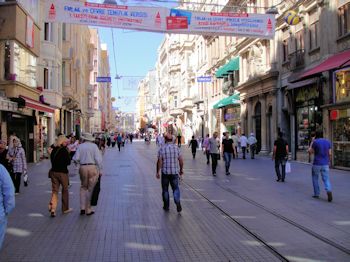

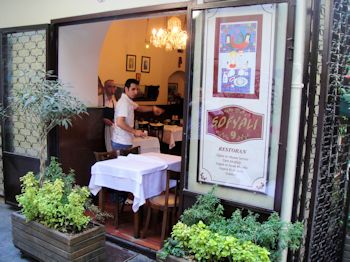
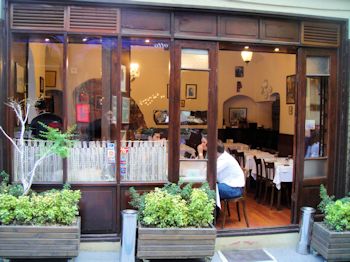

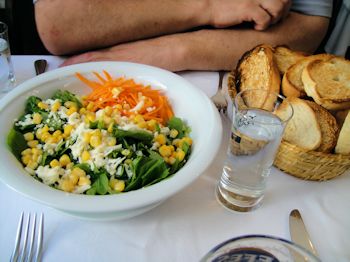
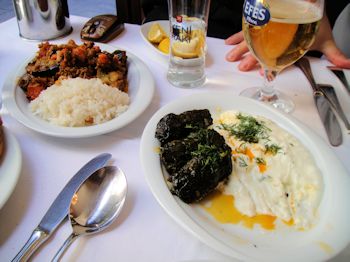
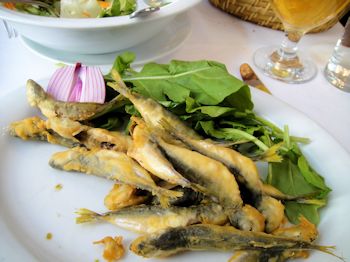
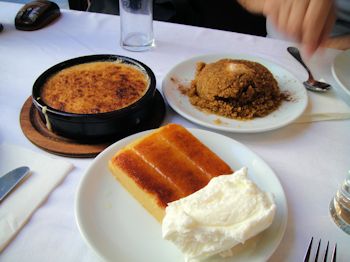
We wandered around the back alleys of Beyoglu, finally settling on Sofyali, a small cafe with a
decidedly French feel to it. The food was classic Turkish, though. Corn and white cheese (like feta) in the salad, stuffed
dolmas (not in grape leaves but something similar), mousakka and a small local fried fish that you eat whole. For dessert
Uluc ordered three different versions of halvah.
We wondered about the mouse-like affair on the table. The left button notifies them that you want the check, the right
button summons the waiter ... and we never did figure out what the middle button did. Summon the police? Activate the
sprinkler system? We had all sorts of ideas. Of course my thought was that in a place this small, there was no excuse for
the waiter NOT to know what each table needed without resorting to technological aids.
This was a full day for us. We bade farewell to Uluc at the bottom of the tram since he still had to catch a boat across
the Bosphorus to his home on the Asian side of the city. We got a crash course in the Istanbul tram system and used it to
beat the traffic back to our hotel. The history of this city is so deep that it is impossible to dig a subway system here.
Every excavation turns up more undiscovered history that must be preserved.
© 2013 Restaurant Doctor